Having been forecast for rain most of the day, we awoke to a cloudy morning, distinctly cooler, but thankfully no rain as yet. We scurried around the village trying to find the Tabac with the church pilgrim stamp, but had to make do with the Cafe de la Maisie’s own. However, whilst scurrying we were just in time to rescue an old lady who had come outside in her dressing gown and slippers to open her front window shutters when the last remaining hinge fell off, leaving her holding up a large piece of wood in considerable distress about it falling on her. We crossed the road and took the shutter from her, picked up the metal hinge and pushed it back into a hole in the wall.
Heading out of town, we were again on farm tracks crossing undulating farmland in the mist.
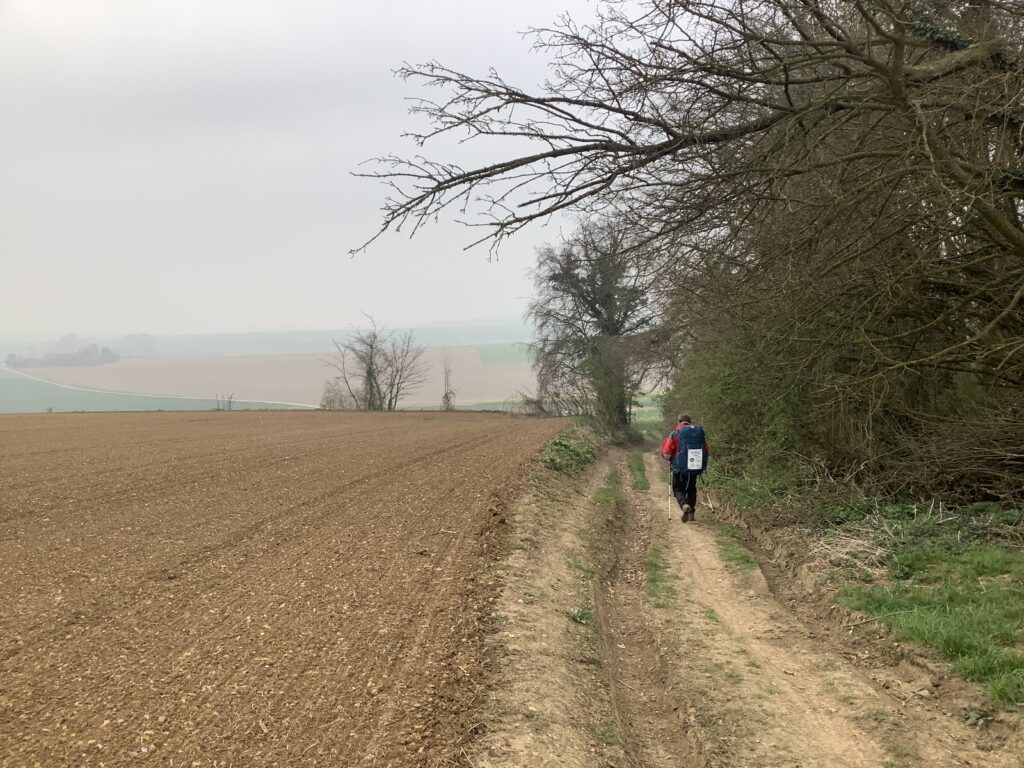
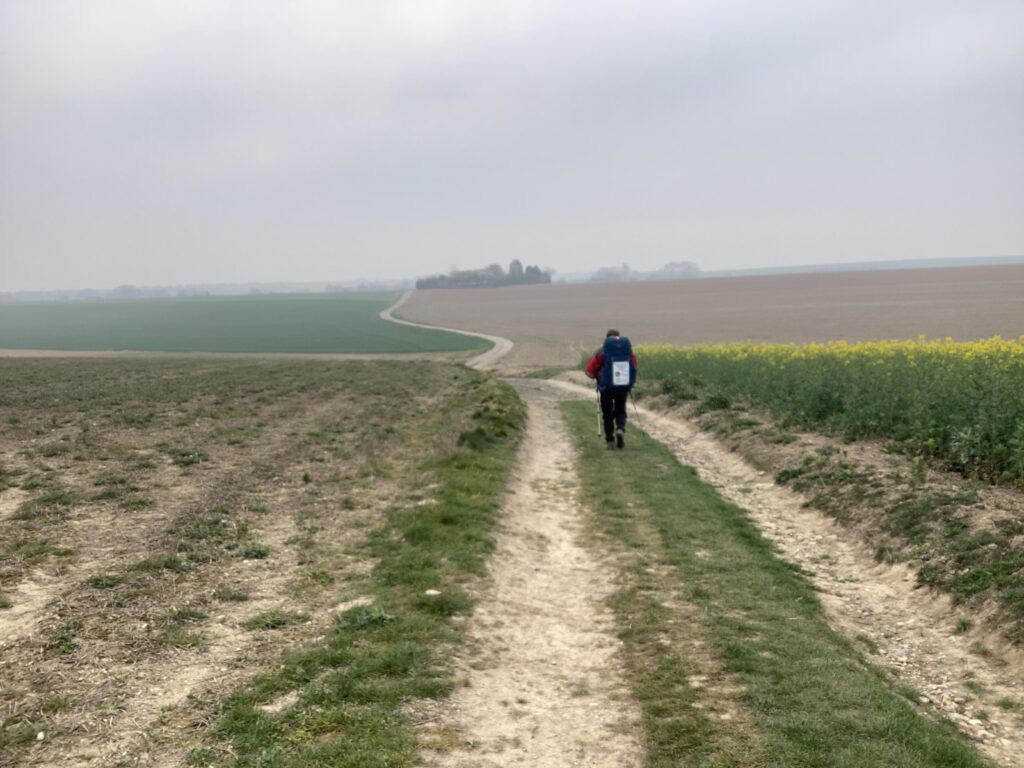
Mostly huge areas of arable crops, interspersed with small patches of woodland. Again, we noticed only larks surviving in the prairie fields, contrasted with a cacophony of small birds on approaching wooded areas. Without hedgerows, there is simply nowhere for small birds to live. Today, several farmers were dashing around on tractors with spreaders full of chemical fertiliser, presumably in anticipation of the forecast rain.
We crossed the A26 Motorway, just north of Culem and stopped to watch the traffic whizzing by, just as we have whizzed so many times before on our way to the Alps or the south.
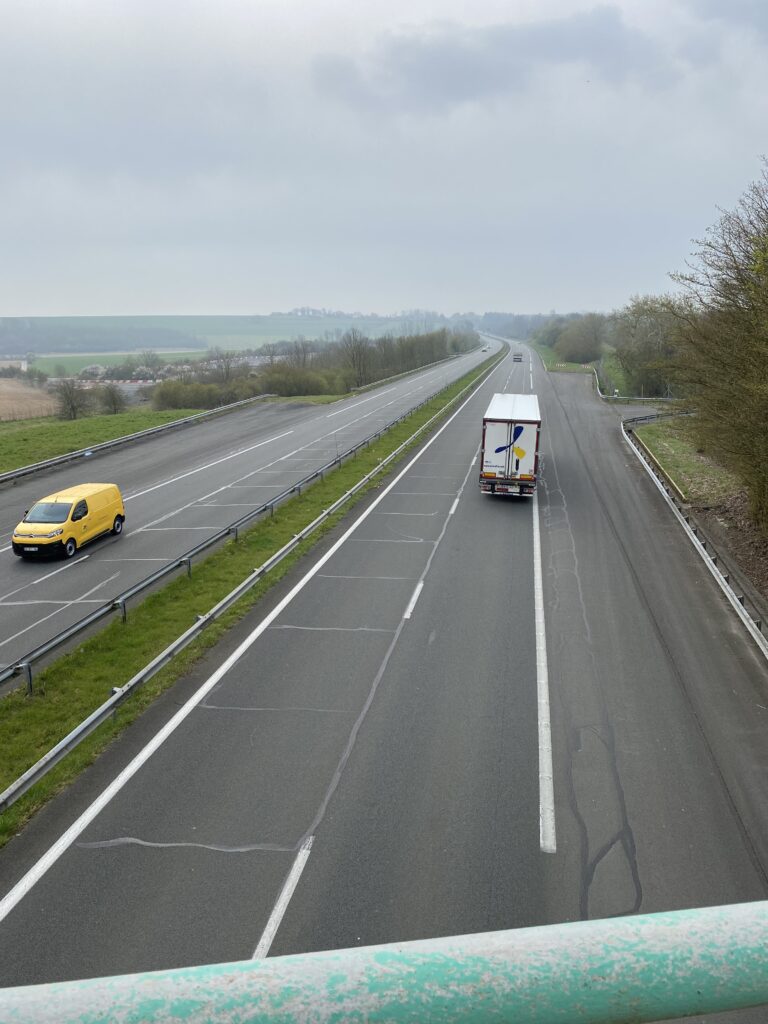
Later in the morning we walked through some smaller farms with small fields in mixed use and abundant hedgerows. A relief from the swathes of arable monoculture.

Just before lunchtime the origin of yesterday’s concrete lorries came into view at a former quarry site which was in the process of backfilling and restoration.
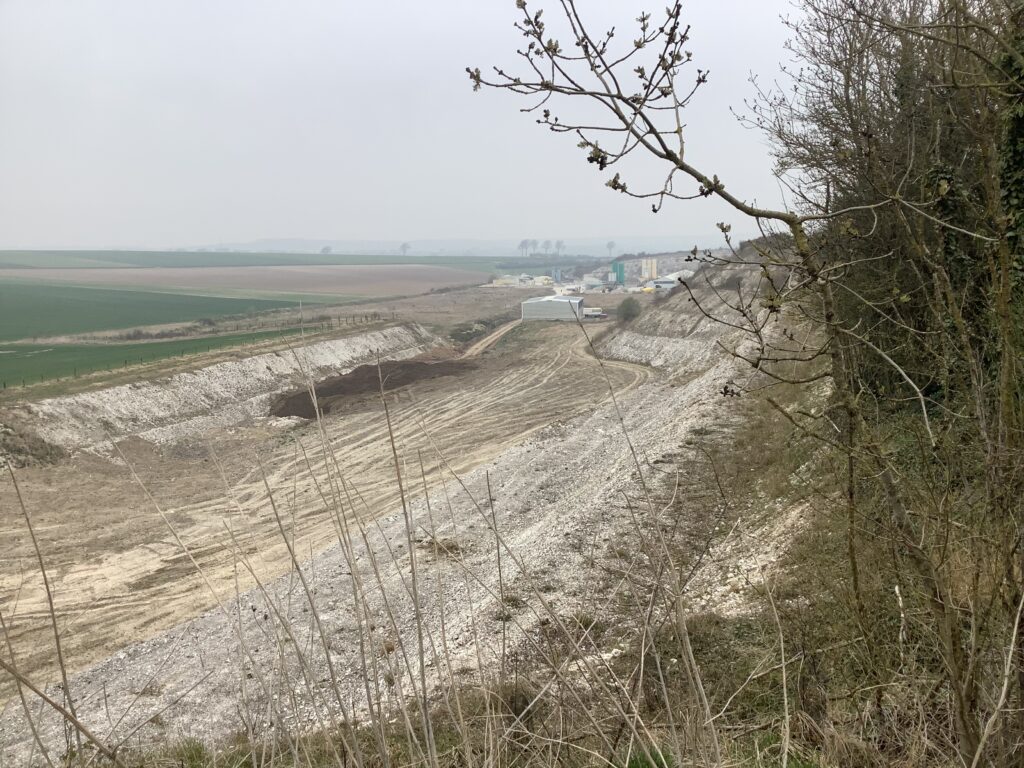
As lunchtime approached the rain forecast for 10am caught up with us, and we made a dash for the church in Grand Difques, hoping to take shelter and relax over our sandwiches. Sadly, this one was firmly closed and, judging by the notices outside, was last used in October for a service of commemoration for those lost to the Covid pandemic. Otherwise, there was a well kept cemetery full of large ornate family tombs, which dare we say (quoting Bill Bryson), suggested too many people, but not enough surnames.

Our route continued in a south easterly direction crossing successive chalk ridges and valleys striking northeast-southwest.

At Comette we found the dear little Eglise Saint Folquin, open. Fortuitously the lady who looks after it was there and kindly showed us around. Originally 15th century it had been rebuilt in stone in the 17th century. The whole style and ambiance of the the building is much less ornate than others we’d visited on our route.

Particularly striking was a window in the sanctuary depicting the Virgin Mary and the Angel Gabriel.

Unusually, we found the ‘tampon’ and duly stamped our Pilgrim Passports. We thanked the lady who showed us around and headed off on our way.
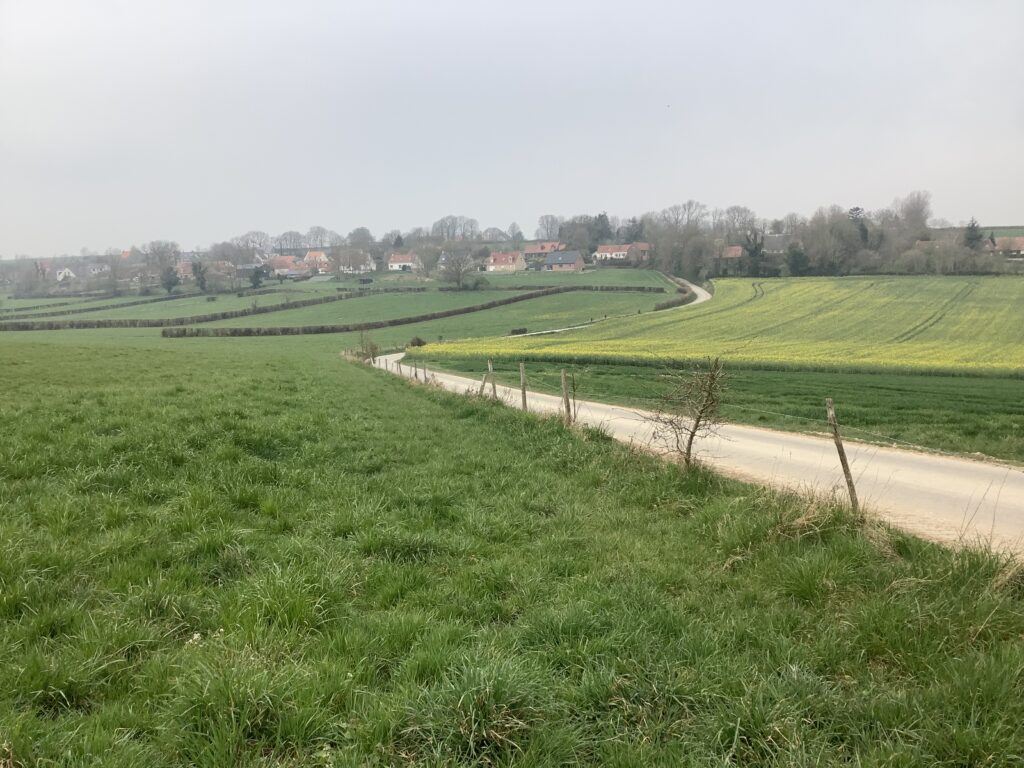
At the next village someone with a sense of humour and perhaps a wish to encourage pilgrims had erected a sign confirming that we’ve covered 107 kilometres from Canterbury, and have a mere 1648 kilometres to get to Rome. We already knew we are slow walkers!
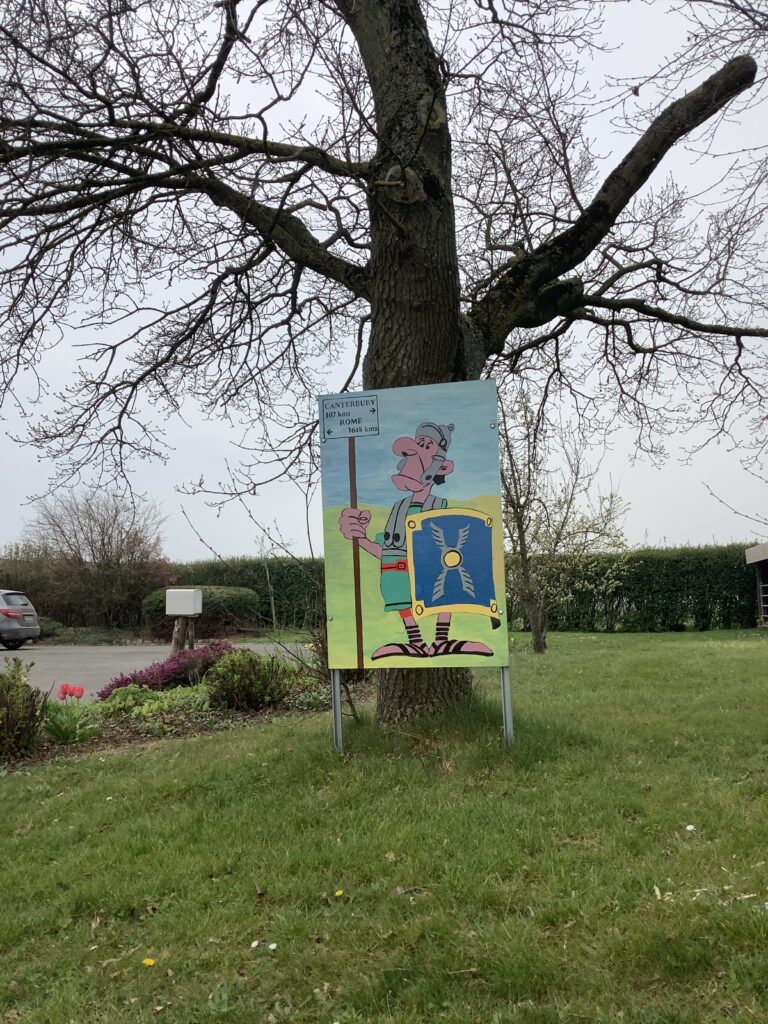
Another stretch along minor roads brought us into the last village for the day, Leulinghem, where we found the carefully tended Commonwealth War Graves of three young airmen who lost their lives on 24 June 1944. As this was soon after D-Day we assume had been providing air cover for the Allied troops who were then fighting their way into France. We will need to research this in more detail. They were Flt Lt JA Edward DFC, pilot, RAF; Flt Sgt S Isherwood, air gunner, RAF; and Pilot Officer TWP Price; air gunner, Royal Canadian Air Force. All three were in their twenties.

The church in Leulinghem was also open, and relatively simple in style, but it had no pilgrim stamp. It’s curious how accustomed we British are to seeing the less ornate churches we have had since the Reformation, and how shocking is the heavily ornate gilding and idolatry found in some continental churches. On the other hand, the architecture of the village churches we’ve seen so far has been unremarkable and less elaborate than many a gothic English parish church.
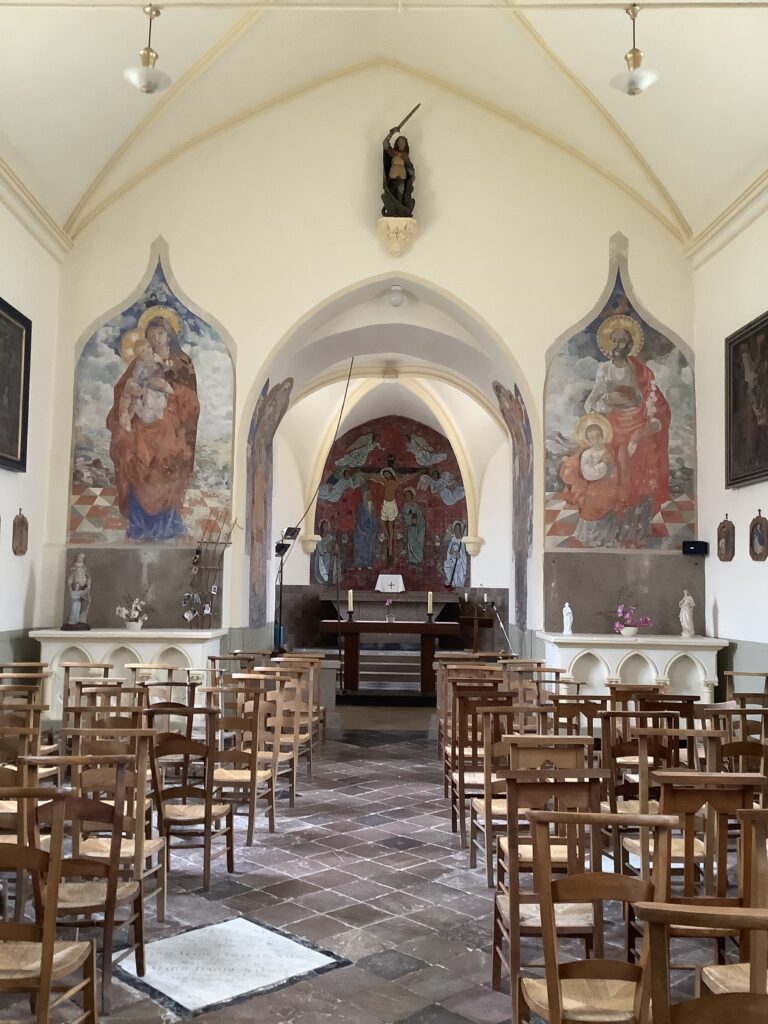
On the way through Leulinghem we noticed many posters in gardens stating ‘non a l’extension de la zone’ and assumed there are plans afoot to extend the nearby industrial area to the south west of the village.
A few kilometres further on we came to the outskirts of Wisques, our destination for the day, and the Abbaye de Saint Paul, a Benedictine monastery favoured by pilgrims wanting a quiet stay as this monastic order follows the rule of silence and accommodation is reputed to be in single spartan cells. We carried on for another kilometre to the Abbaye de Notre Dame, a convent of 19 nuns who offer lodging for pilgrims in a former hunting lodge in the abbey grounds. Unfortunately we arrived during Vespers so there was no one around, but we found a garden room open to sit whilst we waited. Soeur Lucie soon arrived: a delightful jolly lady. She greeted us warmly and said she’d received the message that we’d arrived. She showed us to a comfortable room overlooking the pretty garden.
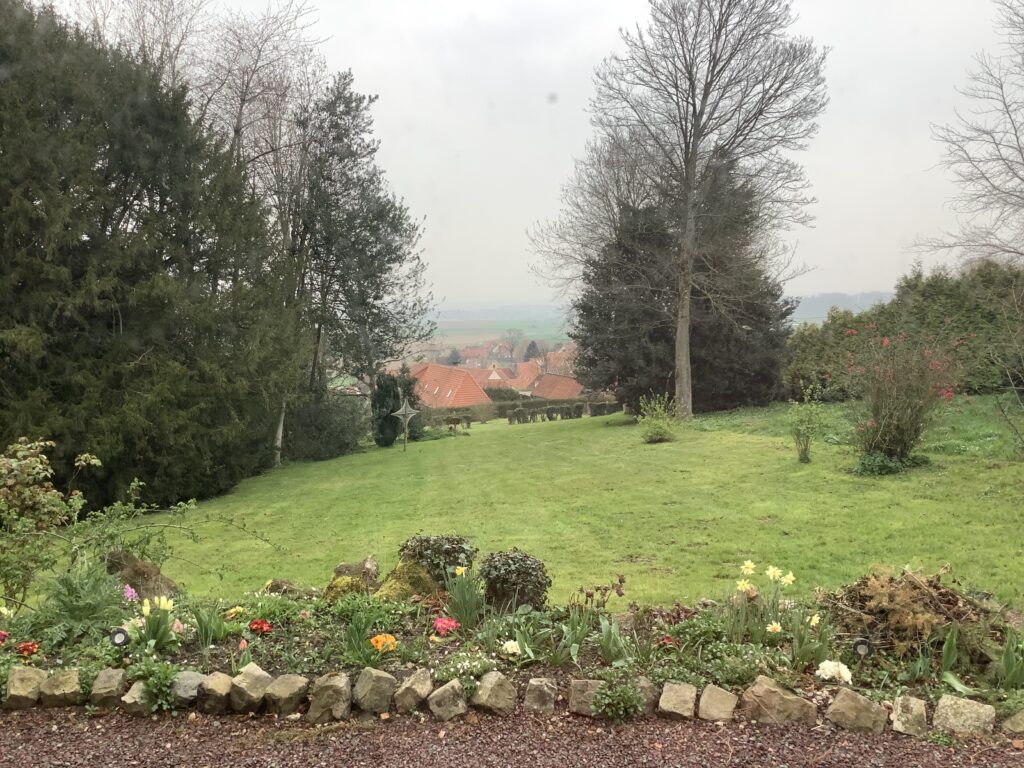
Highlights of the day? The pretty church at Comette and ………..tomorrow is a rest day. Hurrah!